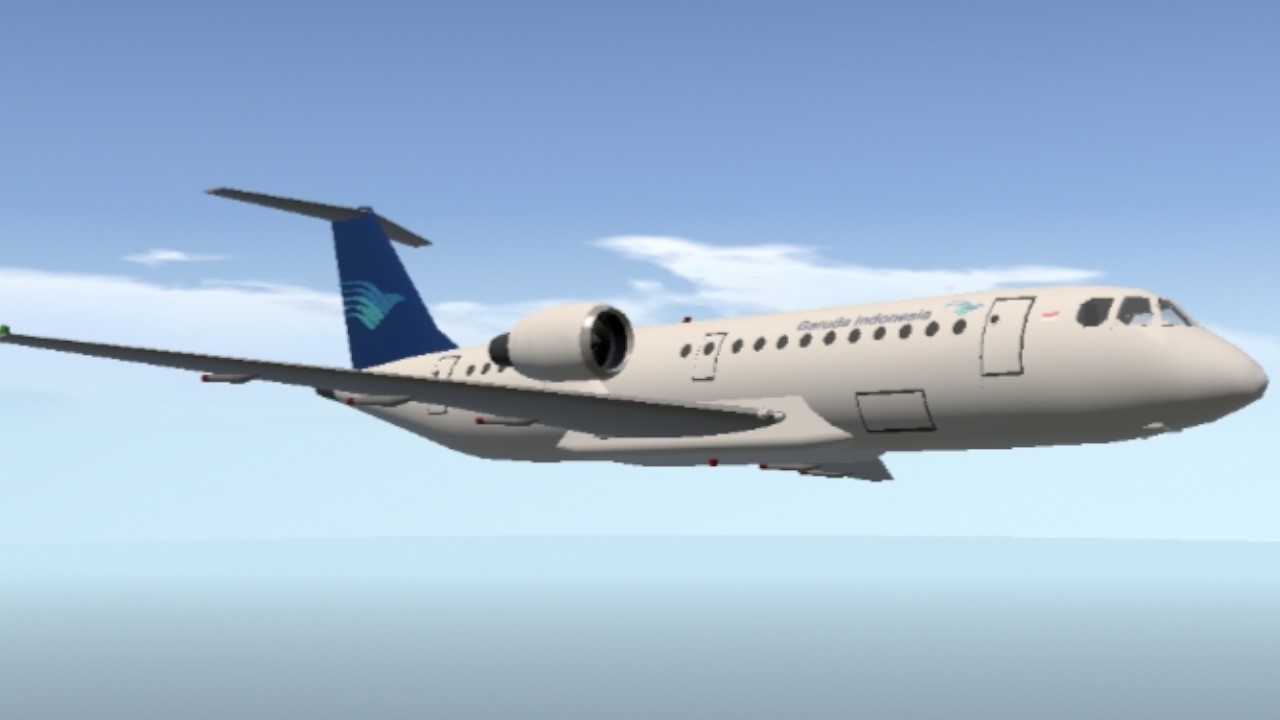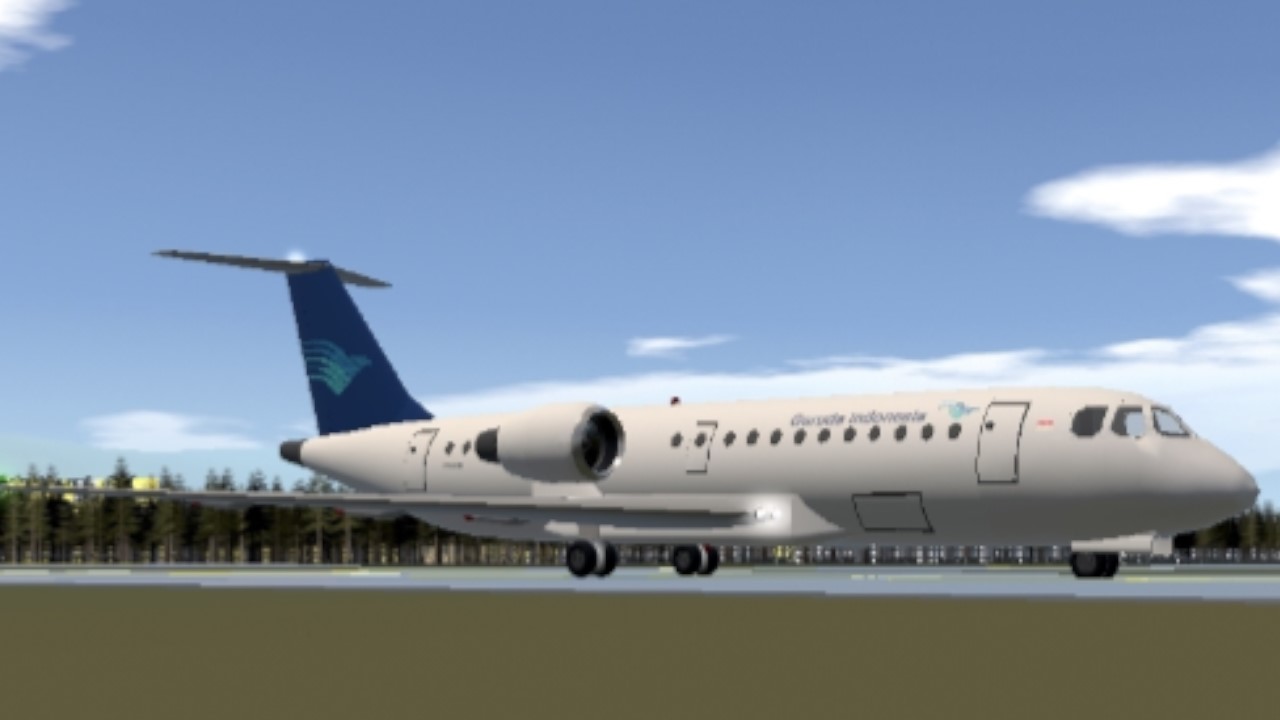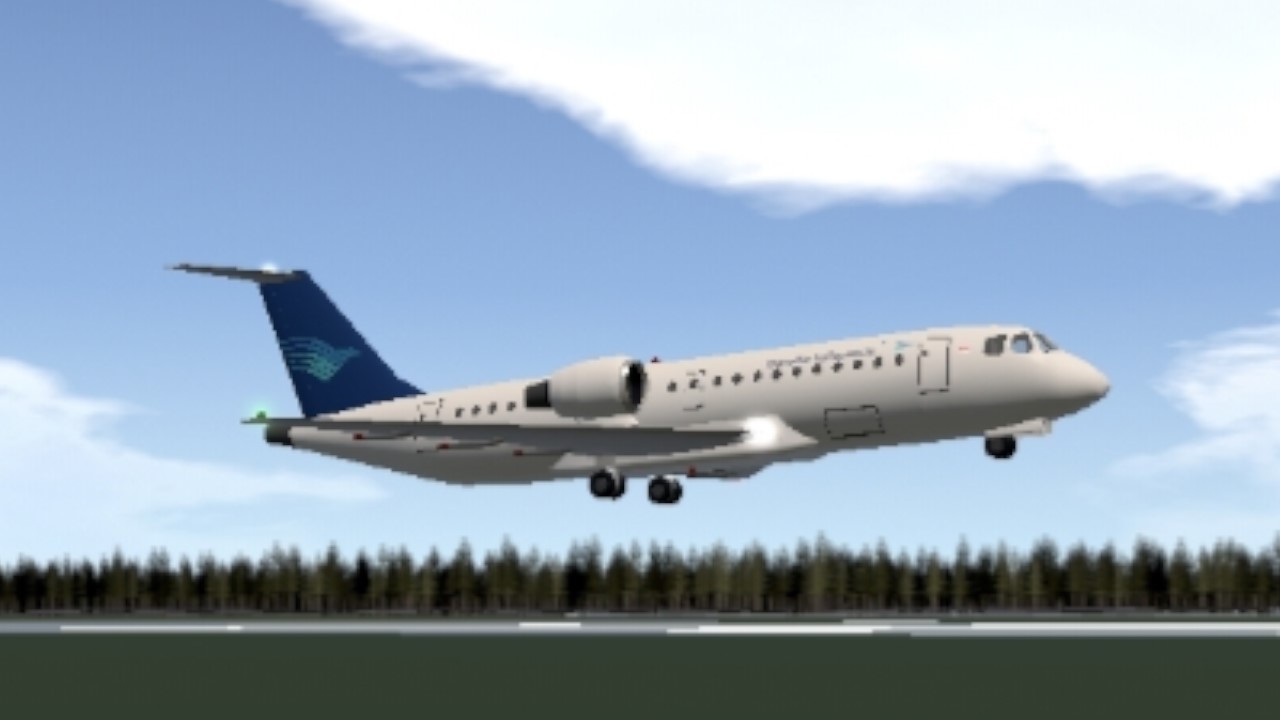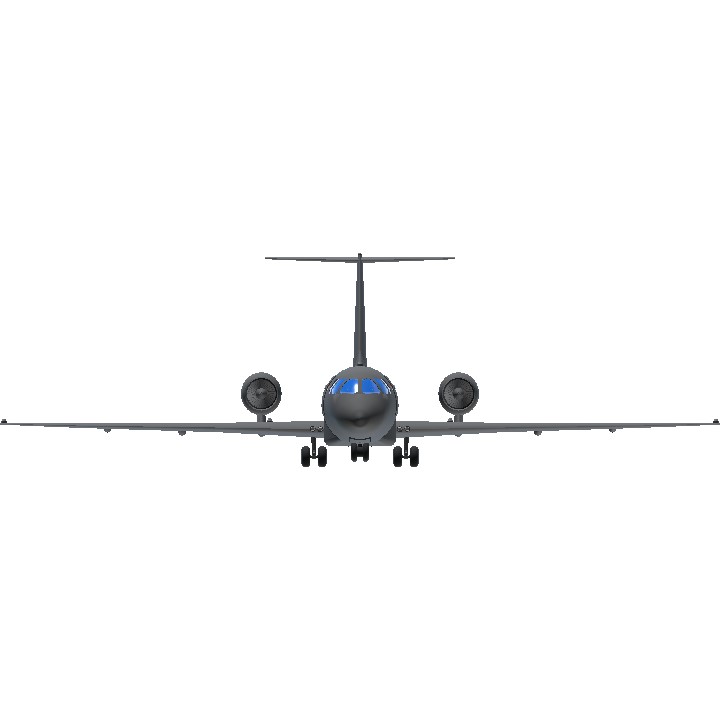This is made for D-01 RepublicOfCursedPlanes’ Livery Challenge
Lore about the aircraft between garuda indonesia:
Its 1991, garuda indonesia is opening a route to makkah. They decided to buy the D-01. 5 were bought.
In 1993, D-01-200 garuda indonesia registrated as PK-MHD had first flied in september 15, 1994. The flight was successful but they soon realized it doesnt have a long range, garuda indonesia assigned this flight from jakarta to makkah. The PK-MHD flight was successful, only thing is it has to stopover at delhi and arba minch.
In 1995, PK-MHD Was very successful only thing is stopping is that the airline is in deficit. It was scheduled to retire in 2009 because the airliner is gonna end up in bankrupcy
In 1999, PK-MHD become the international flight of jakarta. The new years was celebrated in makkah, it had to take a rest for about 1 year.
In 2003, the aircraft had it first flight, not into makkah but to denpasar. Only had 50 flights to denpasar.
In 2008, the captain has a final speech before it retired. The final speech was like a thank you but very emotional.
5 was to brought to a route that they will be doing it again, when 1 was going to makkah they had to stopover at delhi and continue to makkah. The aircraft was retired in 2009. Other 4 had retired 1 year after PK-MHD had been retired. The aircraft was placed in a museum, the last flight was done in 2010, september the 15th.
About D-01-200:
RCP Engineering's predecessor, Wright Engineering, had been famous in the 1950s for manufacturing airliners, including some revolutionary ones like the W-2000.
However, in 1964, Wright Engineering went nearly bankrupt as it could not outcompete airliners like the 707, 737 and DC-8, and the company stopped producing aircraft. It was only revived when the new Republic of Cursed Planes government placed a 86% stake in the company in 1969, nationalising it.
To recover, RCP Engineering was tasked by the government to build military aircraft for the air force. This provided a cushion for RCP Engineering to fall back on, and by 1976, the company had financially recovered.
Even though the company was successful building fighter jets, it still always wanted to go back to the glory days and build great airliners. So in 1979, plans were submitted for a new 150-passenger jet, that could rival the 737.
The new airliner, named D-XX, would have a T-tail configuration with the engines on top of the wings, much like the VFW 614. Apart from giving the aircraft a rather unique appearance, it allowed the D-XX to land at even the most poorly-maintained airports, giving it immense flexibility.
By 1982, the design was finalised and green-lighted. The prototype D-01-100 made its first flight on 8 April 1986, and by 1989, the D-01-200 (production model) started selling to customers.
In 1992, a stretched version that could carry 186 passengers, the D-01-300, was released. It turned out to be more popular than the -200, as it had more capacity.
In 2007, a “D-01 Advanced”was proposed, featuring more advanced technology and updated CFM-LEAP-1b engines, similar to those used on the A320neo. On 7 August 2010, the prototype D-01a-3, the Advanced version of the D-01-300, took to the skies for the first time.
In 2013, deliveries to customers began. The Advanced model was branded the D-01a, while the current D-01-200 and -300 were branded as the D-01c (c for current/classic).
In 2020, the last D-01 Classic, a -300, rolled off the assembly line. The Classic’s manufacturing efforts were switched to production of the Advanced series, and today, only the Advanced models, the D-01-2 and D-01-3, are being produced.
Specifications
General Characteristics
- Predecessor [CLOSED] D-01 Livery Challenge
- Created On Android
- Wingspan 123.0ft (37.5m)
- Length 122.7ft (37.4m)
- Height 36.6ft (11.2m)
- Empty Weight N/A
- Loaded Weight 68,348lbs (31,002kg)
Performance
- Power/Weight Ratio 2.022
- Horse Power/Weight Ratio 0.043
- Wing Loading 31.6lbs/ft2 (154.3kg/m2)
- Wing Area 2,162.1ft2 (200.9m2)
- Drag Points 30048
Parts
- Number of Parts 554
- Control Surfaces 7
- Performance Cost 2,368







Approved
Score: 12/15
@RepublicOfCursedPlanes, here is my submission to the challenge.